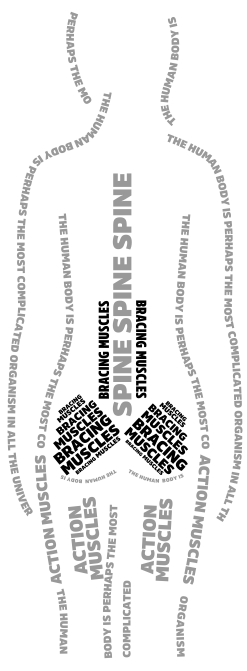In UPRISE, it is by design that I focus on exploring and explaining how the Body Guitar — your unique human back, including the lumbar spine (low back) and Bracing Muscles — can get so out of tune before delving into the readjustment process, which I call Tune Me. Understanding the how — the CAUSE of your back pain — is crucial. Why? Because one kind of pain leads to another kind of pain and causes a cascade of problems throughout the whole system of the body. It is this process that causes the progression of back pain and throws our bodies out of tune.
When a patient first comes to a doctor complaining of back pain, all too often a one-size-fits-all approach is taken in treating them. By and large, rather than using a more specialized exam to diagnose patients, pain doctors have begun using a highly specialized treatment algorithm. UPRISE explains this in further detail, but know that problems with this treatment algorithm are numerous; it is diagnosis by trial and error.
Instead, patients should be properly diagnosed to see exactly what is causing their pain. While the initial cause can vary widely, most manifestations of lower back pain are attributable to one of five problems, which are all part of the same progression of chronic back pain.
- Muscle Strain
- Facet Joint Pain
- Disc Bulges
- Discogenic Pain
- Sacroiliac Joint Pain
Muscle Strain is the most common cause of acute back pain — accounting for over 95% of acute back pain cases. When we overwork the muscles of the back, they go into spasms to protect them from further injury. Spasms and pain are the body’s warning signal — and are not to be ignored. Fortunately, back pain from simple muscle strain is mild, responds well to symptomatic treatment, and usually resolves quickly without further problems — typically within a couple of days to a few weeks. While most muscle strain resolves easliy, for many people, muscle strain is just the beginning of a much bigger problem. Continuing to strain your back muscles can injure the muscles and lead to chronic back pain. If muscle strain lasts for more than a couple of weeks, you have to consider whether it is really muscle pain you are feeling or the muscle protecting something else that is hurting.
Facet Joint Pain, caused by inflammation in the facet joints of the spine, is the second most common cause of back pain. Facet joints connect individual vertebrae, which are the bones that make up the spine. In people with chronic back pain, the facet joints are the site of initital injury in 90 percent of cases, making it the most common gateway to chronic back pain. This is why patients with facet pain need to act fast to arrest the problem before it spreads.
A “Disc Bulge” refers to a number of MRI findings in which the soft disc that cushions two vertebrae bulges out backwards, towards the spinal canal, often causing pain. There are many variations of the classic disc bulge, but they generally develop and are treated in the same way. Disc bulges are the second most commonly diagnosed cause of chronic back pain — and also one of the most over-diagnosed, as disc bulges show up easily on an MRI.
Whereas a disc bulge causes pain in nearby nerves and tissue, Discogenic Pain originates inside the actual disc itself. Since the pain is coming from the disc, the sufferer hurts anytime the move. Discogenic pain is felt in the center of the back, and it can mimic facet pain, calling for careful diagnosis. Like facet pain and disc bulges, discogenic pain maybe triggered by trauma, but the underlying cause is more often destabilization and Bracing Muscle weakness.

Sacroiliac Joint Pain (or SI pain, for short) occurs — as the name implies — in the sacroiliac joint. This is where the spinal column connects to the pelvis.
The joint is surrounded by ligaments which make the joint itself essentially immobile — or at least it’s designed to be immobile. When the spine is not properly stabilized due to weak Bracing Muscles, the body compensates by walking differently. Walking in this compensatory way helps stabilize the spine, but in turn strains and stretches the ligaments around the SI joint until they can no longer hold the joint steady. Movement where none should be causes inflammation, which causes pain. While SI joint pain can be caused by trauma or genetics, it is typically the result of Bracing Muscle weakness brought on by another form of chronic back pain.
When patients don’t get an accurate diagnosis and proper treatment that recognizes the progressive nature of chronic back pain, their pain will continue to progress. This, in turn, leads to progressive Bracing Muscle weakness, which leads to more pain.
To arrest this crisis, doctors and patients must join together and free ourselves from outmoded and broken ways of thinking about back pain. It truly is a revolution that has to start with the way we think about the progression of back pain. We have to recognize that our bodies are our instruments, which must remain finely tuned. — Dr. Wheeler

